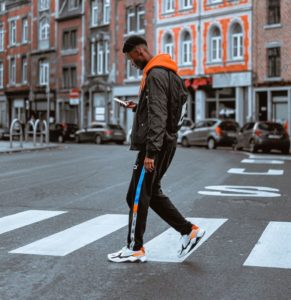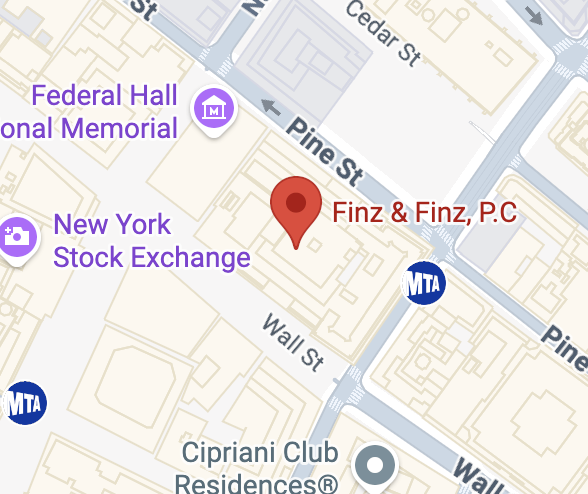
Pedestrian accidents can result in severe injuries, requiring costly medical bills for hospitalization, surgery, rehabilitation, and more. Along with cuts, scrapes, and bruises, pedestrian accident victims may sustain more serious injuries like spinal cord injuries and traumatic brain injuries (TBIs). These injuries often require expensive long-term care and prevent the victim from returning to work.
If you have been seriously injured in a pedestrian accident in New York or Long Island, contact Finz & Finz, P.C. today. Our New York pedestrian accident attorneys will consider all the long-term effects of your injuries when determining the types of compensation you are entitled to. We have helped many New Yorkers just like you recover maximum compensation. Call today at 855-TOP-FIRM for a free initial consultation.
Causes of Pedestrian Accidents
The vast majority of pedestrian accidents occur because of a driver’s negligence.
Some common causes of pedestrian accidents in New York include:
- Speeding
- Distracted driving
- Inattention around intersections
- Failure to yield the right of way
- Failure to stop at a crosswalk, stoplight, or stop sign
- Rolling stops
- Drunk while under the influence of drugs or alcohol
- Left-hand turns
- Unmarked crosswalks
- Reduced visibility at night
- Poor road conditions
- Vehicle malfunction
While pedestrian accidents are typically caused by negligent drivers, it’s important to be vigilant as a pedestrian. Keep the following pedestrian safety tips in mind next time you’re walking in New York:
1. Be visible
Make sure that you are always visible to drivers. Making eye contact with drivers when possible will help. This is particularly critical when crossing the street and at nighttime. According to National Highway Traffic Safety Administration, nearly one-third of all pedestrian fatalities happen between 8 p.m. and midnight. Wearing brightly colored or reflective clothing can help with visibility. When possible, stay in areas that are well-lit.
2. Make use of sidewalks
Sidewalks are the safest place to walk. If there is no sidewalk, it’s typically safer to walk while facing road traffic and as far left as possible. Use caution when walking near a road without a sidewalk. Stay off highways and other areas that don’t allow pedestrians.
3. Cross streets at intersections or crosswalks
You want to cross the street where drivers expect pedestrians. Avoid jaywalking. Look for vehicles in all directions. If a crosswalk is not available, find a well-lit area where you have a good view of traffic. Wait for a gap that allows enough time to cross safely. Keep watching for vehicles as you cross.
4. Look both ways
Before you cross a street, look left, then right, then left again. Keep in mind that motorists may not see you even though you can see them. Never assume a car will stop, either. Even if you have the right of way, wait until the vehicle has come to a complete stop before crossing in front of it.
5. Obey traffic signals
Use the “walk/don’t walk” signals at intersections and crosswalks when available. Only walk when the signal says “walk” and traffic has stopped. If you cross when the signal says “don’t walk,” and you are struck by a car, there’s a strong chance you will be found to be responsible for your injuries.
6. Look around stopped vehicles
Just because a driver sees you does not mean that the drivers behind them also do. The car behind a stopped car could swerve around it, not seeing you until it is too late.
7. Watch for turning cars
When crossing the street, take extra care to watch for vehicles turning onto the parallel street. Vehicles turning onto the road you are crossing are typically checking the road for oncoming traffic and may not see you. When walking on a sidewalk next to a driveway, look for any vehicles turning in. Most vehicles making a right-hand turn from traffic won’t stop unless they see you.
8. Avoid drinking alcohol
According to the American Automobile Association (AAA), almost half of pedestrian-related motor vehicle accidents involve the consumption of alcohol. The AAA reported that 34% of those accidents involved a pedestrian who was intoxicated. Alcohol impairs an individual’s ability to make sound decisions. Just as motorists should never operate a vehicle while under the influence of alcohol or drugs, pedestrians should never drink before walking near areas with traffic.
9. Don’t listen to loud music
Listening to music, a podcast, or an audiobook while you are walking can be dangerous. Make sure whatever you are listening to is quiet enough that you can still maintain a safe level of awareness about your surrounding environment. You will need to be able to hear approaching vehicles and bicycle bells.
10. Avoid distractions
In addition to listening to loud music, you should avoid behavior or activity that could cause you to become distracted while walking next to traffic. If you are distracted, you could unknowingly walk into the road or not follow traffic laws. Common distractions include:
- Texting or checking social media on your phone
- Talking on your phone
- Reading a book or tablet while walking
- Blindly following a crowd
Contact Our Pedestrian Accident Attorneys
If you have been hurt in a pedestrian accident in New York, filing an injury claim can be intimidating and complicated. Fortunately, the knowledgeable New York pedestrian accident attorneys at Finz & Finz, P.C. on Long Island can help. We will handle the entire investigation involved with your pedestrian accident case, protect your rights, and make sure you do not say or do anything that could compromise your claim. At Finz & Finz, P.C., we will fight for the full and fair compensation you need and deserve. To schedule a free, no-obligation case review, call now at 855-TOP-FIRM.





























